Miso (味噌) is a traditional fermented soybean paste in Japanese cooking, packed with umami and remarkable health benefits. We will delve into its rich history and diverse varieties and provide tips on shopping, storing, and cooking with miso.
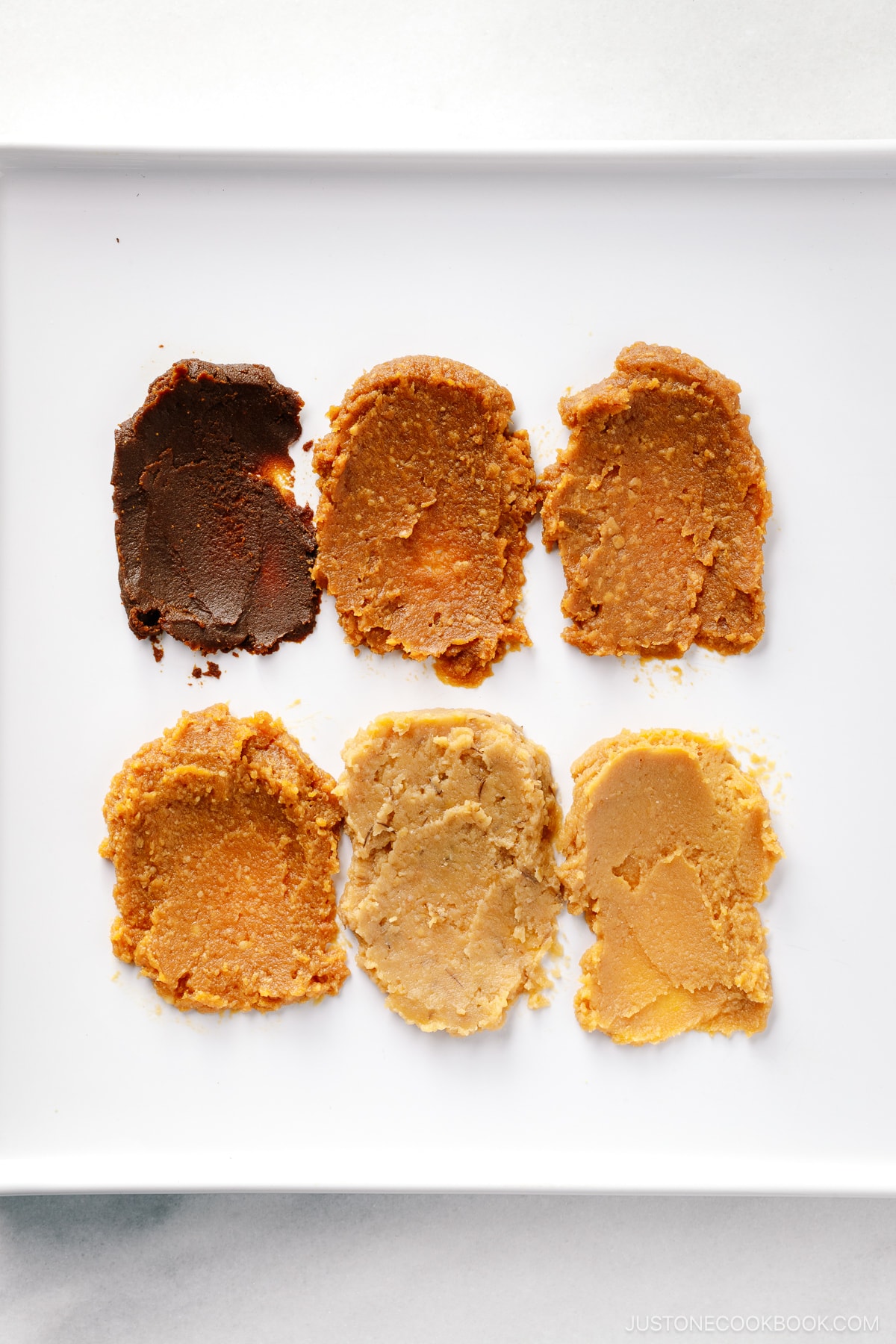
Miso (味噌) is a traditional soybean paste and a cornerstone of Japanese cooking. It is beloved for its unique flavor and numerous health benefits. There are various types of miso pastes, ranging from the ingredients, flavor profile, and color.
Table of Contents
What is Miso
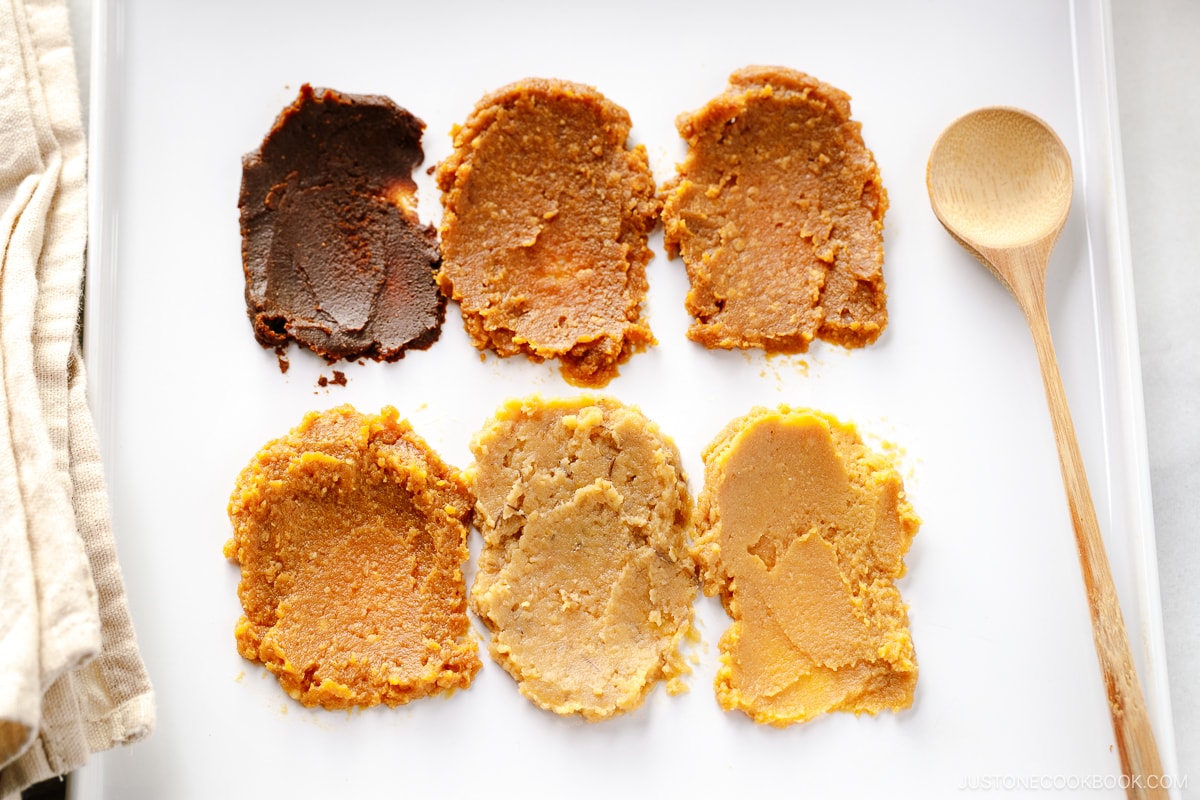
Miso (味噌), also known as fermented soybean paste, is made from soybeans, salt, and koji culture (麹, a fermentation starter, AKA aspergillus oryzae). Sometimes, it incorporates grains such as steamed rice or barley. The mixture is left to age and ferment in cedar-wood kegs at ambient temperature for six months to five years.
Salty, slightly sweet, earthy, and some people even describe it as funky, miso has a deeply layered flavor that can only result from nature and time. The consistency can be smooth or chunky, with bits of koji and mashed soybeans.
It’s used to make miso soup, a warm umami-rich bowl featuring tofu cubes and seaweed, as a seasoning paste in cooking and hot pot dishes, in marinades for proteins and vegetables, and desserts.
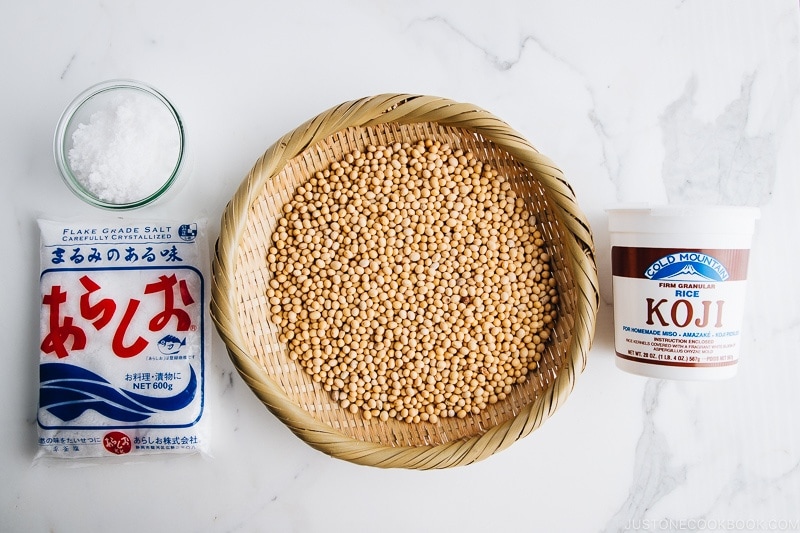
Health Benefits of Miso
Widely recognized as one of the top superfoods for gut health, miso is incredibly rich in amino acids, vitamins, and minerals like vitamin K, manganese, zinc, protein, and calcium.
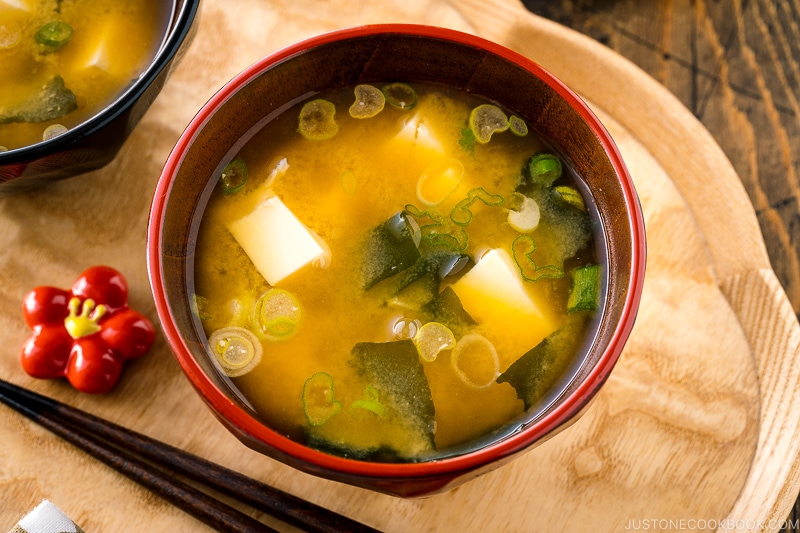
As a probiotic, it offers many gut and heart health benefits. Known for improving digestion, we even start the day by enjoying miso soup for Japanese traditional breakfast!
READ: The Health Benefits of Miso for more.
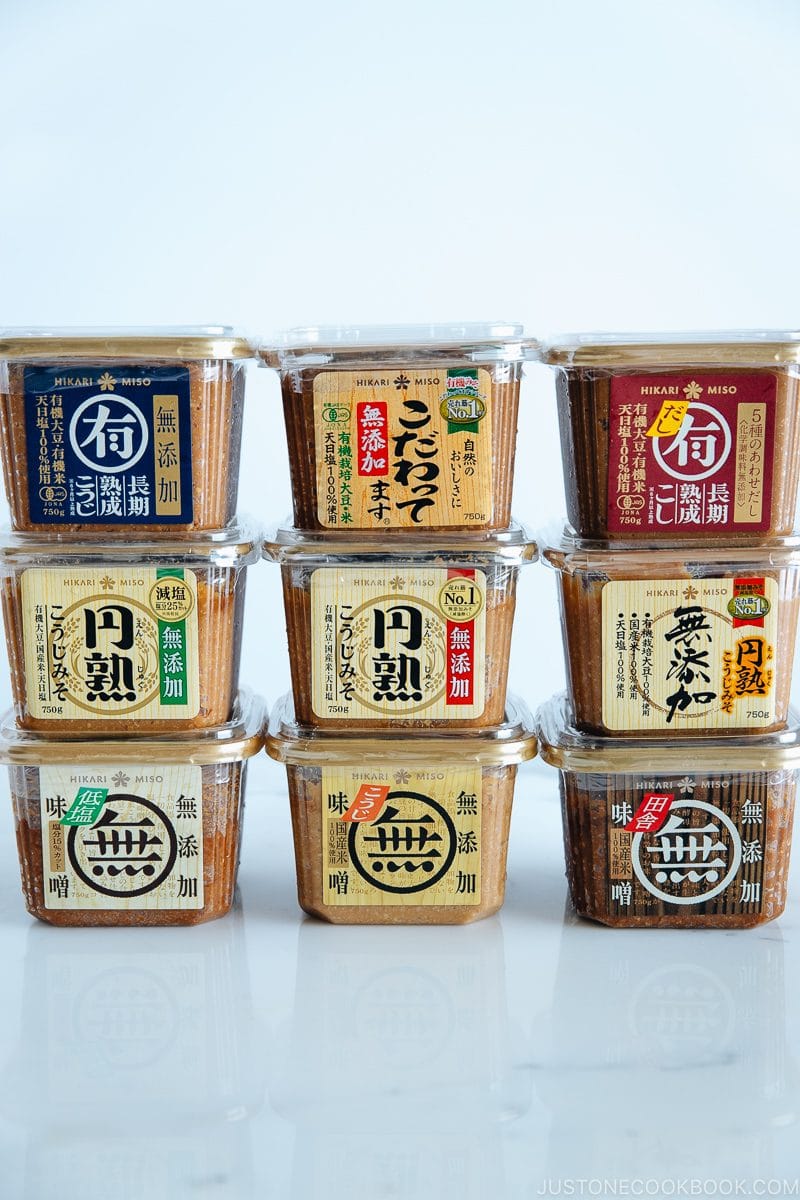
Different Types of Miso

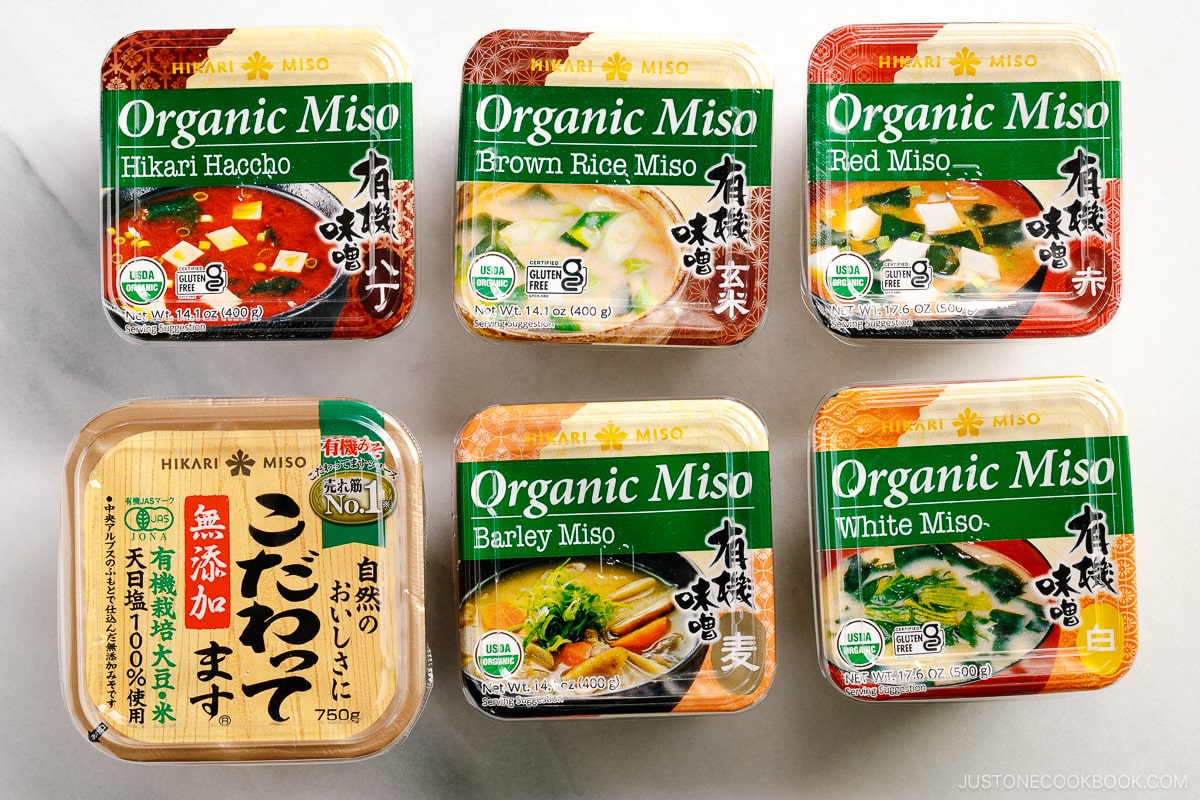
To start, a wide range of miso varieties are available in the market, making it fascinating to discover them all!
In Japan, miso is categorized based on ingredients (types of koji), color, taste, and region. Each miso maker has their unique formula.
READ: The Enduring History of Miso.
For most of us living outside of Japan, including in the U.S., the options are more limited, but you can still find a variety of choices. You may also find gluten-free miso.
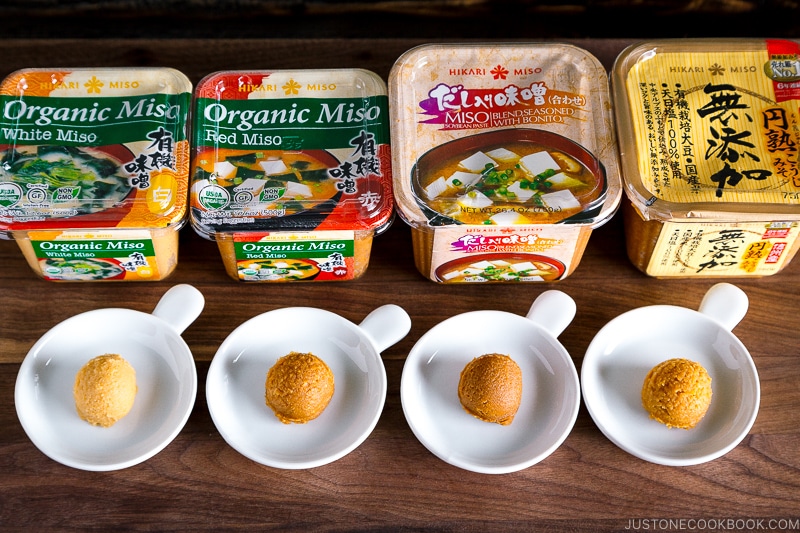
Which miso type is the best? Imagine cheese and wine; it’s really up to your preference. Each variety of miso varies according to the type of koji used, the ratio of koji to soybeans, and the length of the fermentation and aging period, resulting in distinct flavors and appearances.
Here, I’ll walk you through the varieties of miso that you can typically find in the US.
Miso by Ingredient (Koji)
1. Rice Miso
Rice miso, or kome miso (米味噌), is the most common type. It is made by fermenting soybeans, salt, and rice koji (米麹).
2. Barley Miso
Barley miso, or mugi miso (麦味噌), is made by fermenting soybeans, salt, and barley koji (麦麹). It has a unique aroma and umami flavor. It is very dark in color and can be pretty salty, but it has a rich taste. Barley miso is typically fermented for one to three years.
3. Soybean Miso
Soybean miso, or mame miso (豆味噌), is made by fermenting soybeans, salt, and soybean koji. Its unique astringency and rich umami characterize it. It undergoes one to three years of fermentation and has a blackish-brown color and stiff texture.
4. Mixed Miso
Mixed Miso, chogo miso (調合味噌), or awase miso (合わせ味噌) is a mixture of two or more types of rice miso, barley miso, and soybean miso, or miso made with two or more types of koji.
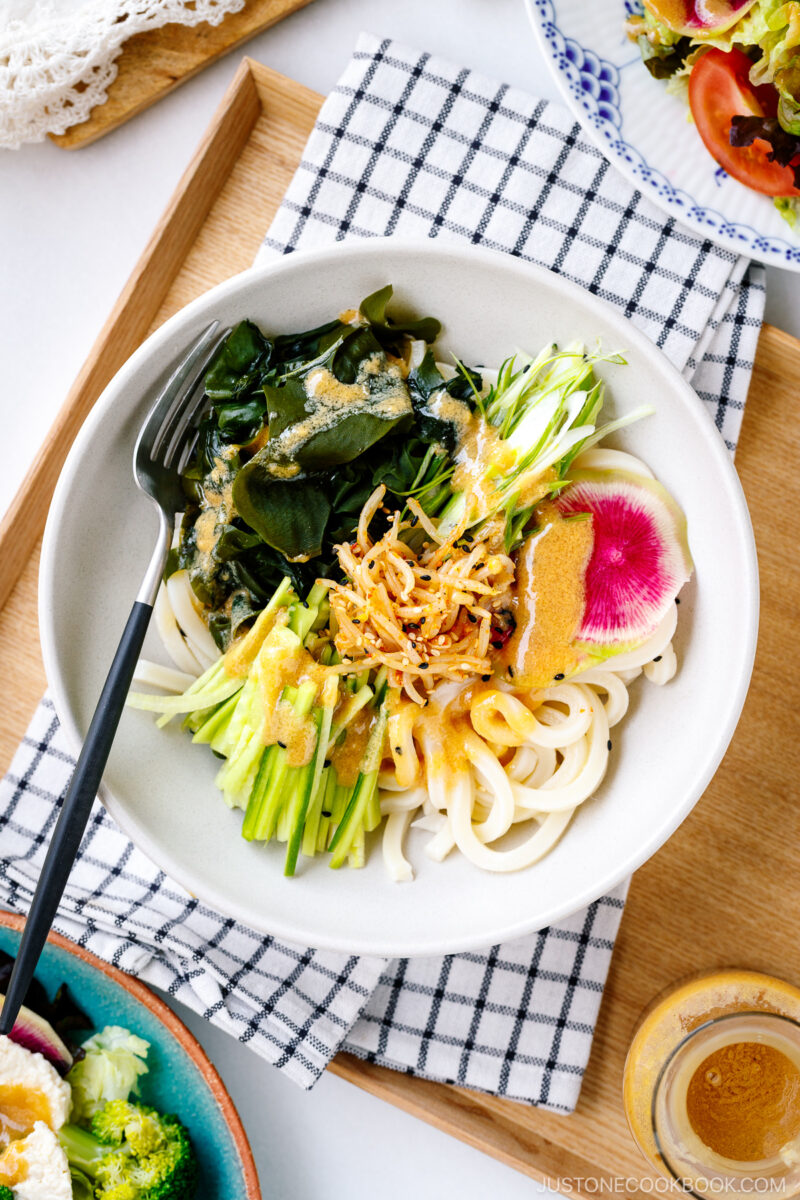

Miso by Color
The color of miso changes depending on the ingredients, the amount of koji, and the fermentation time. The main cause is the Maillard reaction during fermentation and aging.
1. Red Miso
Red miso, or aka miso (赤味噌), is made from 70% soybean and 30% rice or barley. The soybeans are steamed before mixing with the koji. The long fermentation (about 1 to 1.5 years) produces darker-colored, strong, salty miso (13%). Red miso contains the highest levels of protein of all types of miso. The color can range from deep amber to chestnut. The color is due to the Maillard reaction when the soybean’s amino acids react with the sugars, resulting in browning. Red miso will continue to brown with more time, but it will not spoil due to the high salt content.
2. White Miso
White miso, or shiro miso (白味噌), is made from about 40% soybean and 60% rice or barley. The fermentation period is much shorter (1 to 2 weeks) than red miso, resulting in a slightly less salty and delicately flavored than red miso. The beige color is due to the boiling process of the soybeans, which prevents the Maillard reaction. Of all miso varieties, white miso contains the most carbohydrates and therefore tastes the sweetest. The texture is very smooth.
3. Yellow Miso or Light-Colored Miso
Yellowish light-colored miso, or tanshoku miso (淡色味噌), is made through the same process as white miso. It is yellow because it has a larger amount of salt than when making white miso and causes a Maillard reaction than white miso due to an extended aging period.

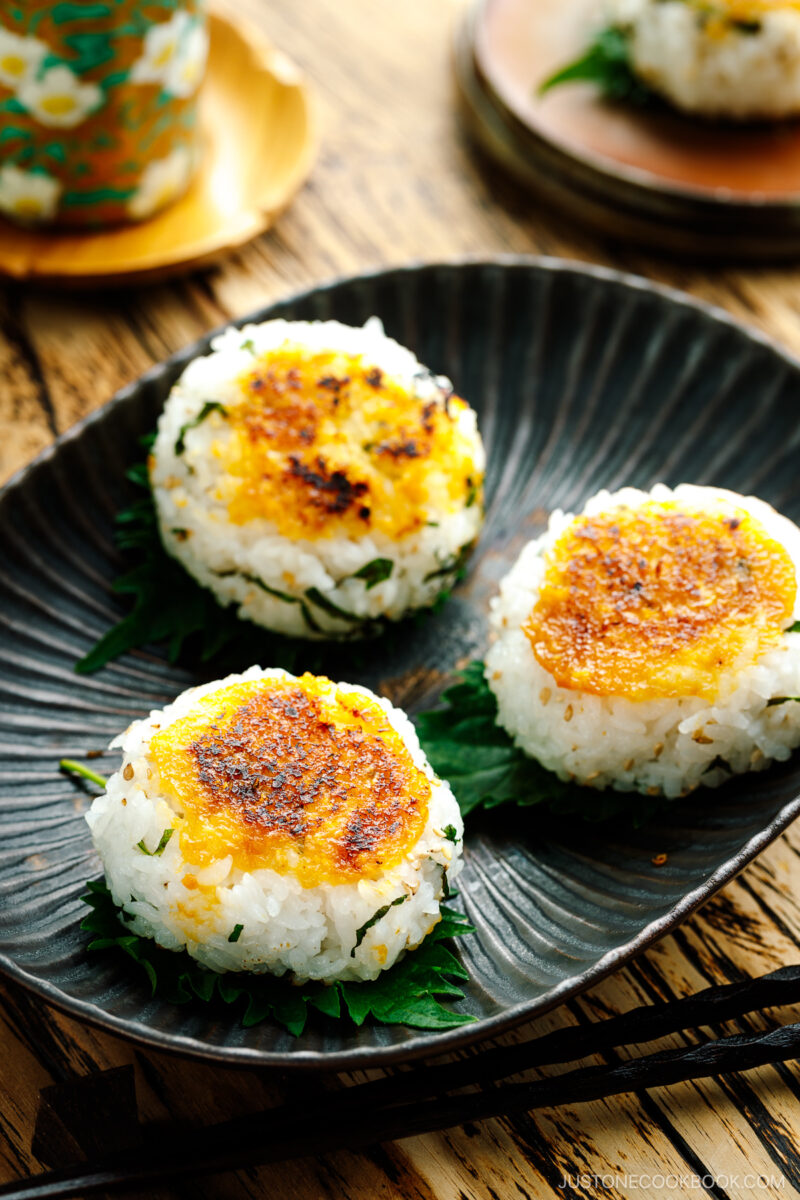
How To Use Miso in Everyday Cooking
In Japan, miso is a dietary staple, enjoyed daily in various forms. While miso soup is common, its uses extend far beyond that. You can incorporate miso for seasoning stews, enhancing stir-fries, and making flavorful sauces, marinades, and salad dressings. The versatility of miso even extends to desserts!
Don’t limit yourself to traditional applications; think creatively and use miso as a flavor boost in non-Japanese cooking! Add a spoonful of miso to tomato or meat sauces for a savory kick. Try to incorporate it into creamy soups for added depth of flavor, or use it to create glazes.
Miso’s ability to heighten umami in your dishes is unparalleled, all without significantly increasing the salt content.
Quick Tip: High heat can kill the active bacteria in miso. It’s best to add miso toward the end of cooking. Careful not to boil miso soup once it is added.
👉🏼 Check out 15 Delicious Miso Recipes to get started, or browse our collection for all the miso recipes.
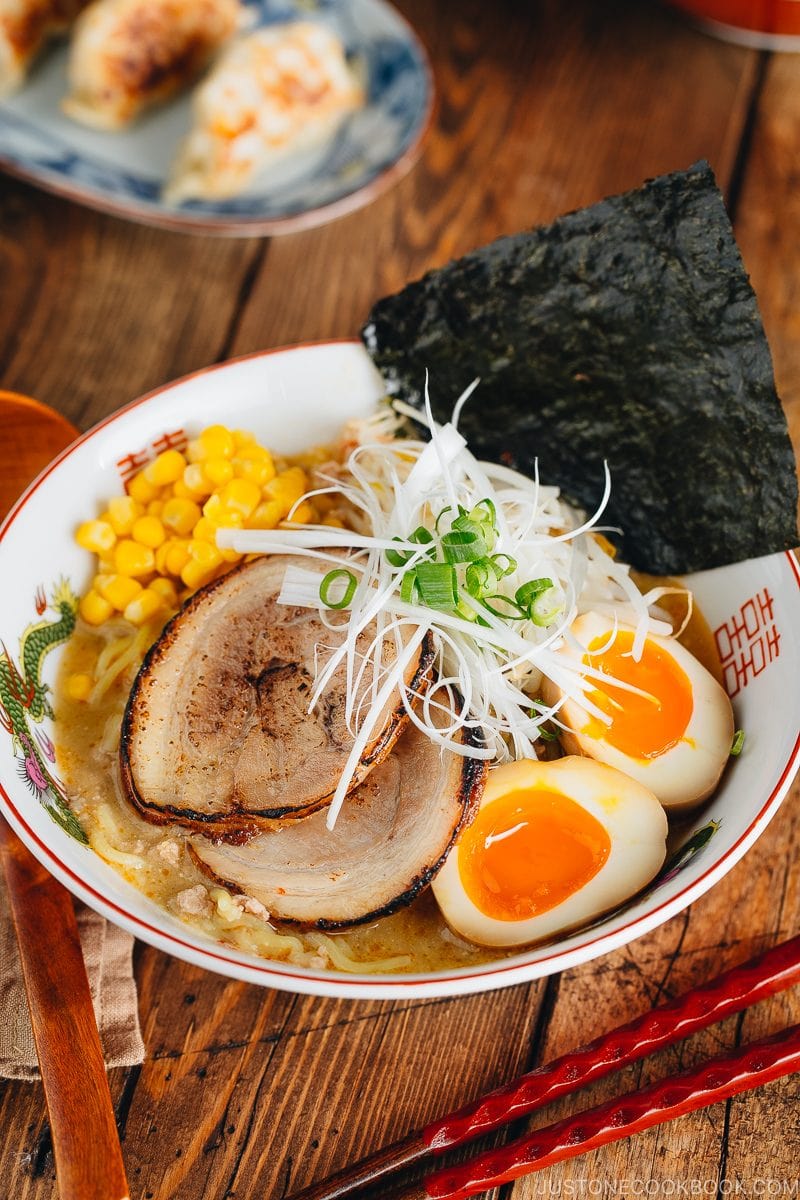

Where To Buy Miso
You can buy miso at Asian/Japanese supermarkets, a grocery aisle with Asian products in American grocery stores, health food stores, and online (like Amazon).
Most Japanese households stock their fridge with 2-3 types of miso for different uses, and sometimes, we combine different pastes to make miso soup. This way, we won’t get bored with the same flavor. Feel free to shop around for a few brands and varieties you like.
How to Choose Miso
Check the ingredient list and avoid the ones with any additions such as alcohol, stabilizers, or other additives. The best way to find quality miso is to taste it plain. A little goes a long way. Plus, you will get what you paid for, so try to find small-batch miso made using the traditional method.
My Favorite Brand of Miso
As for recommendations, I’ve been using Hikari Miso® for over a decade and partnering with the company for several years. I use various types of miso from Hikari Miso®, and I genuinely believe their miso is one of the best tasty miso available in Japan and the U.S.
You can find Hikari Miso on Amazon.
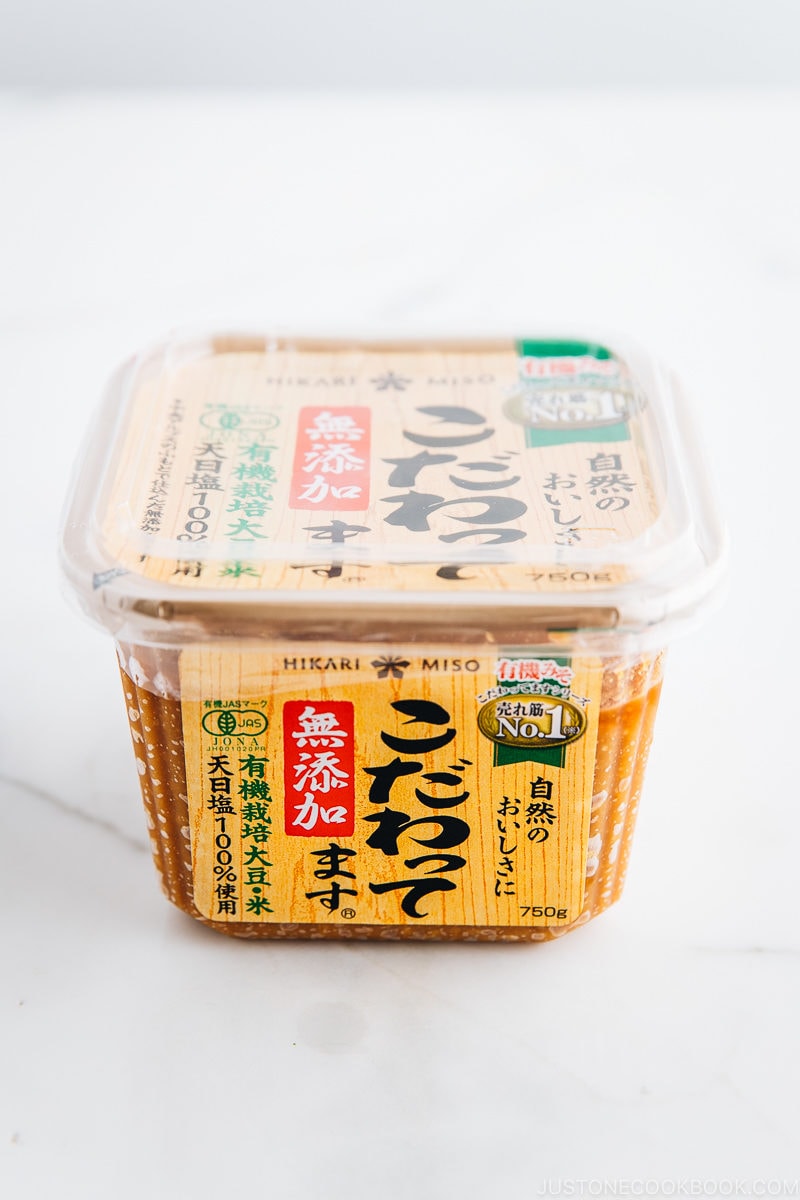
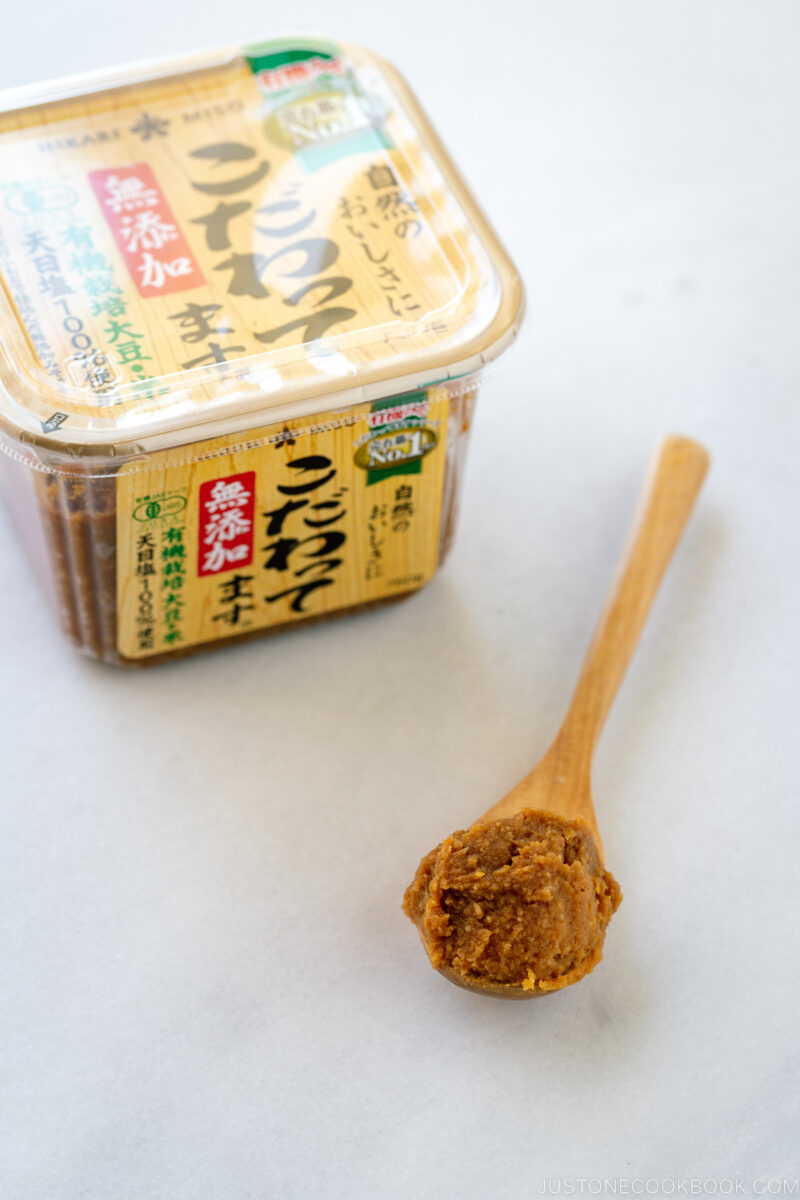
I always have several types of miso, but if I have to pick one miso, it’s Kodawattemasu by Hikari Miso.
How to Store Miso
This helps halt the fermentation process and prevents mold growth on exposed areas, as miso contains a significant amount of ‘good’ lactic acid bacteria, including Tetragenococcus halophilus and others, in case you were curious.
Some unopened miso can be kept in a cool, dry place, away from light and heat. Always check the labels for storage instructions.
Either way, once you open the package of miso, seal the package tightly when not in use. For added protection against oxidation, cover the exposed area with parchment paper or plastic wrap. Always use dry, clean utensils to scoop out the paste to prevent contamination and mold growth.
To store in the freezer, the temperature must stay higher than 25ºF or -5ºC. Under these conditions, miso won’t freeze, but the taste and aroma are best preserved.


Can Miso Paste Go Bad?
Since miso is a fermented food, you can generally keep miso for a long time. As long as it’s quality miso, the taste should be consistent for up to a year.
Miso doesn’t spoil due to its high salt content; the color darkens over time, especially in warm environments. That is normal and doesn’t mean it has gone off. The taste degrades if kept for over a year, so check the taste before use.
Signs of Miso Spoilage
If you notice any change in smell, color, texture, or spotty molds, it’s best to be safe and toss the product.
Substitutions for Miso
There is no appropriate substitute for miso. If you’re allergic to soybeans, you can find miso paste made of other beans, such as edamame, azuki beans, and chickpeas.
Some soy-free miso options are Chickpea Miso from Miso Master and South River Chickpea Miso.
You might consider substituting it with tahini or peanut butter if you’re using miso in non-Japanese recipes, such as in salad dressings or dipping sauces. While they share a similar creamy texture, they do not possess the salty-umami flavor profile that miso offers.


More FAQs
Q: Can you eat miso raw?
Yes, you can eat raw miso! Eating it raw is the best way to obtain probiotics in miso, as it will die off with applied heat. You can also taste the difference between good and bad miso by eating it raw. Use miso raw in salad dressings or dipping sauces.
Q: What can I add to miso soup?
Check out Homemade Miso Soup for all the variations regarding miso soup!
Q: How much miso should I add to miso soup?
- ¼ cup (60 ml) = 72 grams
- 1 cup (240 ml) = 288 grams
- 1 tablespoon (18 g) of miso per miso soup bowl (200-240 ml of dashi soup stock)
Q: Is miso similar to the Korean soybean paste doenjang?
Doenjang (된장) is a fermented Korean soybean paste. The key difference is that doenjang is made with soybeans and salt, without the koji starter. This results in a sharper and more robust flavor profile. The culinary uses also vary, as doenjang complements the hearty and chili-spiced Korean cuisine. Korean miso soup is known as doenjang guk, and it may include ingredients like garlic or gochujang.
While you can substitute doenjang for miso in a pinch, it is generally not recommended.
Q: Where does miso come from?
Curious to learn about the rich history and miso-making process? Read The Enduring History of Miso.
How to Make Miso From Scratch
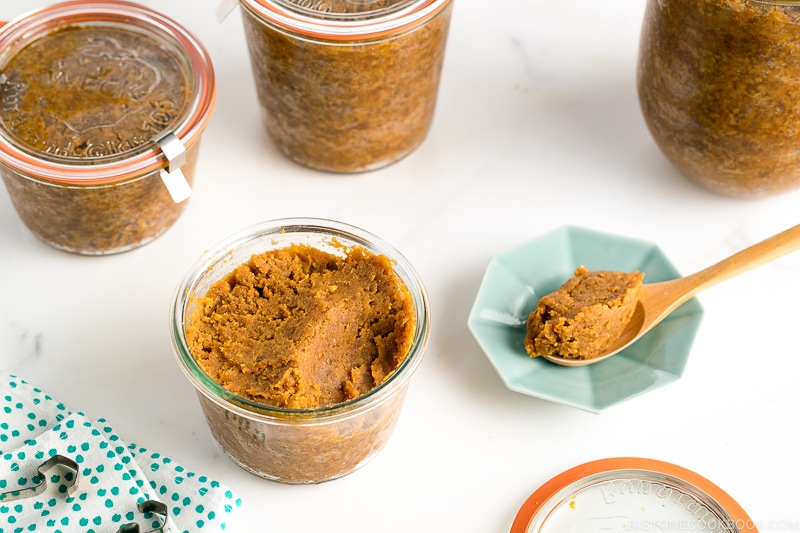
Yes! You can also make homemade miso with just four ingredients and a little patience!
If you’re interested, get the homemade miso recipe here.
Wish to learn more about Japanese cooking? Sign up for our free newsletter to receive cooking tips & recipe updates! And stay in touch with me on Facebook, Pinterest, YouTube, and Instagram.










[…] is a type of soy sauce formed as a byproduct of miso paste. During miso making, a liquid accumulates around the paste, hence tamari (溜まり) “to […]
[…] for fish marinades. If you are interested in reading more about miso and its different types, Just One Cookbook wrote a great detailed post about […]